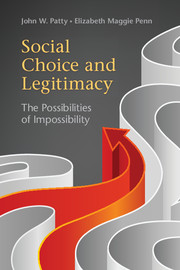6 - A Social Choice Theory of Legitimacy
Published online by Cambridge University Press: 05 August 2014
Summary
In this chapter, we formally define our theory of legitimacy and characterize both the sets of policies that may be chosen legitimately and the decision sequences that may be used to legitimate a policy choice. As discussed in the previous chapter, our theory of legitimacy views a legitimate choice as being, for the most part, inseparable from the decision sequence that legitimates the choice. It is arguably not enough to know simply that a policy choice can be legitimated; an observer might reasonably demand to know how the choice in question was legitimately rendered. In this way, our characterization of the decision sequences that legitimate their associated final choice is analogous to a characterization of legitimate procedures.
PRIMITIVES AND NOTATION. Let χ denote the set of all finite nonempty sets of alternatives and, for any set X ∈ χ, let PX denote the set of all asymmetric binary relations (principles) on X. An asymmetric binary relation on a set X, p ∈ P, is a subset of X × X. If (x, y) ∈ p, we write x p y and say that “x is related to y through p.”
- Type
- Chapter
- Information
- Social Choice and LegitimacyThe Possibilities of Impossibility, pp. 104 - 120Publisher: Cambridge University PressPrint publication year: 2014

